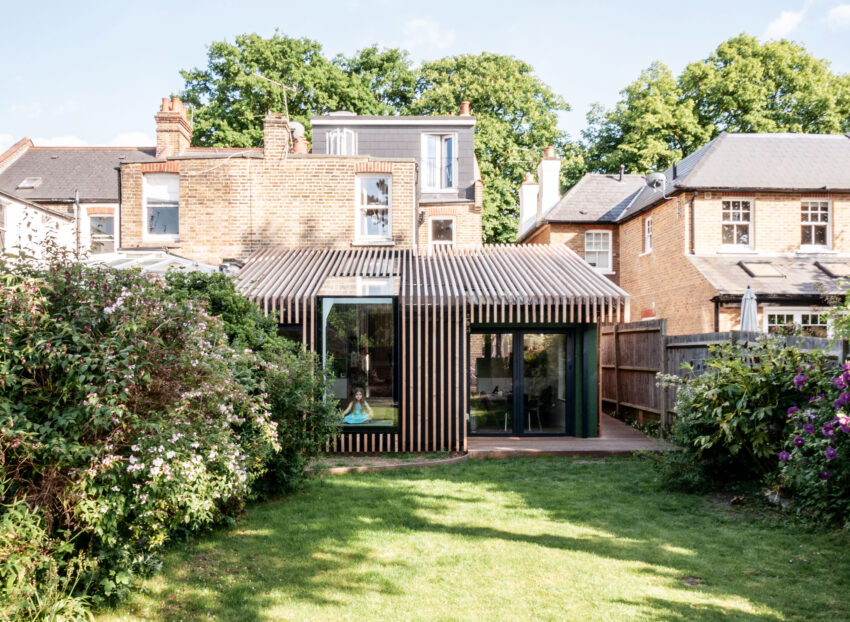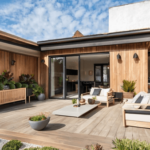When it comes to enhancing the overall aesthetic and functionality of your home, the significance of quality roofing cannot be understated. Home exteriors roofing plays a pivotal role in safeguarding your residence from the elements while also contributing to its curb appeal. Whether you’re considering a complete overhaul or simple repairs, understanding the ins and outs of roofing options can make all the difference.
As homeowners, we often focus on interior decoration and landscaping, but the exterior is what truly makes a lasting impression. With innovations in roofing technology, designs, and materials, creating an inviting exterior that speaks to your personal style while providing the necessary protection is entirely possible. So, let’s dive deeper into the world of home exteriors roofing and discover the possibilities that await.
The Basics of Home Exteriors Roofing
At its core, home exteriors roofing encompasses various materials and styles that serve to cover and protect a structure. Typically, roofing is categorized based on two main types: sloped (or pitched) and flat roofing. Each type comes with its own unique set of advantages and challenges. Here are the most common roofing materials you’ll encounter:
- Asphalt Shingles: Affordable and widely used, perfect for many residential homes.
- Metal Roofing: Durable and long-lasting, available in various colors and styles.
- Tile Roofing: Aesthetic and robust, often used in warmer climates.
- Wood Shakes: Adds warmth and character, requires regular maintenance.
- Slate Roofing: Luxurious and durable, though more expensive.
Choosing the Right Material for Your Roof
Making a choice from the myriad of materials can be overwhelming, but the right selection depends on several factors, including climate, budget, and aesthetic preference. Here are some guidelines to help you make an informed decision:
- Consider Your Climate: Areas prone to heavy rain or snow may require more durable materials like metal or slate.
- Budget Considerations: Asphalt shingles are budget-friendly, while slate and tile can be more of an investment.
- Architectural Style: Choose materials that complement your home’s design. For instance, tile roofs look great on Mediterranean-style homes.
- Longevity: Invest in materials that offer better longevity. Metal and slate can last over 50 years with proper upkeep.
Roofing Styles to Consider for Your Home
The style of your roof can greatly influence the overall appearance of your home. Here are some popular roofing styles that you might want to consider:
- Gable Roof: This classic design features two sloped sides that form a triangle and is great for snow runoff.
- Hip Roof: A more complex design with slopes on all sides, offering increased stability and durability.
- Mansard Roof: Known for its four sides, which create additional living space in the attic.
- Flat Roof: Often used in modern design, ideal for urban settings, and offers rooftop gardens.
- Gambrel Roof: A barn-style roof that maximizes headspace in the upper levels.
The Importance of Quality Installation
Even with the finest materials, poor installation can lead to a host of problems, including leaks and damaged shingles. Therefore, it is essential to hire reputable roofing contractors with a solid track record. Look for the following when selecting a contractor:
- Experience and References: Always ask for references and check online reviews.
- Insurance and Licensing: Ensure they are properly licensed and insured to safeguard your investment.
- Warranty and Guarantees: A good contractor should offer warranties on both materials and workmanship.
- Detailed Estimates: Get written estimates detailing all aspects of the roofing project.
Maintenance Tips for Home Exteriors Roofing
Maintaining your roof is key to its longevity and performance. Here are some tips to keep your roof in tip-top shape:
- Regular Inspections: Schedule professional inspections at least once a year.
- Clean Gutters: Keep gutters clear of debris to prevent water damage.
- Address Repairs Promptly: Don’t wait to fix minor issues that could escalate into larger problems.
- Trim Overhanging Trees: Prevent branches from scraping and damaging your roof.
- Inspect Flashing and Seals: Ensure that roof flashings and seals are maintained to prevent leaks.
For more roofing tips, check out [Tauapa](https://www.en.tauapa.com/) for insights on improving your home’s exterior.
When to Replace Your Roof
While repairs can extend the lifespan of your roof, there comes a time when replacing it is the best option. Here are signs that it may be time for a replacement:
- Age: If your roof is nearing its expected lifespan, it may be time to consider a new one.
- Granule Loss: Check for granules in gutters; significant loss can signal a failing roof.
- Shingle Damage: Curling, cracking, or missing shingles are telltale signs of wear.
- Water Damage: If you spot water stains on your ceilings, it’s likely time for a replacement.
- Moss and Algae Growth: Excessive moss or algae can signal an underlying issue with roof health.
Eco-Friendly Roofing Options
As environmental concerns become more pressing, many homeowners are turning to eco-friendly roofing solutions that reduce carbon footprints. Here are a few sustainable options:
- Solar Roofing: Integrating solar panels into your roofing can provide renewable energy.
- Green Roofs: These living roofs utilize vegetation to improve insulation and reduce rain runoff.
- Cool Roofing: Reflective materials that keep your home cooler can significantly save on energy costs.
- Recycled Materials: Look for roofing made from recycled products, like rubber or metal.
The Future of Home Exteriors Roofing
As technology advances, so does roofing innovation. From energy-efficient materials to smart roofing systems that monitor your roof’s condition, the future looks promising for homeowners. Here’s what to expect:
- Smart Roof Systems: Incorporating IoT technology to monitor leaks and roof health.
- Advanced Materials: Roof materials that self-repair and offer even longer lifespans.
- Sustainable Practices: An increase in eco-conscious materials and installation methods.
- Customization: Ability to choose roofing materials that not only improve energy efficiency but also fit individual preferences.
Expand to view more about roofing trends
The trends are leaning toward personalization, where homeowners opt for unique designs that reflect their style while ensuring functionality.
FAQs
What is home exteriors roofing?
Home exteriors roofing refers to the various roofing systems used to protect and enhance the exterior of a home, including materials, styles, and installation techniques.
How long does a roof typically last?
The lifespan of a roof can vary greatly based on materials. Asphalt shingles last about 20-30 years, while metal and tile roofs can last 50 years or more with proper maintenance.
How do I know if my roof needs repairs?
Signs of roof damage can include sagging, curling shingles, leaks, and visible mold. If you notice any of these, it’s advisable to consult a professional.
What should I consider when choosing roofing materials?
Consider factors such as climate, budget, architectural style, and maintenance requirements when choosing roofing materials for your home.
Are there eco-friendly roofing options available?
Yes! Eco-friendly options include solar roofing, green roofs, cool roofing materials, and roofs made from recycled products, which reduce environmental impact.




